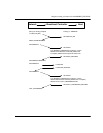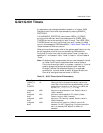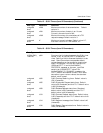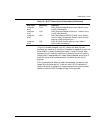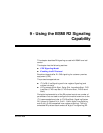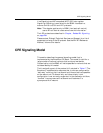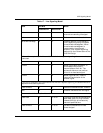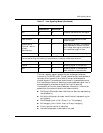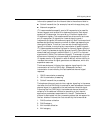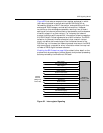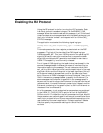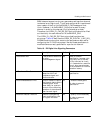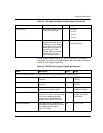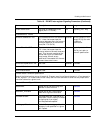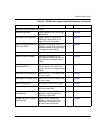
CPE Signaling Model
November 2009 339
The inter-register signaling performs the exchange of address
information via R2 MF tones. The split-band forward and backward
tone sets allow the definition of sets of forward and backward
protocol signals. The exchange is performed in a compelled manner
with the outbound channel sending a forward address signal that is
acknowledged by a backward signal that itself directs the
transmission of the next piece of address information. Information
passed from the outbound side to the inbound side is:
DNIS digits (Dialed Number Identification Service) representing
the called party
ANI digits (Automatic Number Identification) representing the
calling party
DNIS category (a.k.a. Call, Group II, or Toll category)
ANI category (a.k.a. Caller, User, or Group I category)
Circuit type (terrestrial or satellite)
Half echo-suppressor to be used or not used
Idle 10 10 Inbound side sends the idle signal.
Disconnection initiated by the outbound side.
Clear forward 10 01 Outbound side sends the clear
forward signal.
Release guard
(Optional; refer to
network
specifications)
10 11 This state is optional. The inbound
side responds to the clear forward
with a clear back signal and holds it
for a specified length of time.
Idle 10 10 Inbound side sends the idle signal.
Channel blocking is implemented according to ITU recommendations for “both-way” trunks.
The side performing the blocking is considered the inbound or backward channel.
Idle 10 10 Both ends of the channel are idle.
Blocked 10 11 Blocking signal is transmitted.
Idle 10 10 Blocking signal is removed and
both ends are in the idle state.
Table 17. Line Signaling Model (Continued)
State CAS Bits Notes
Outbound AB Inbound AB



